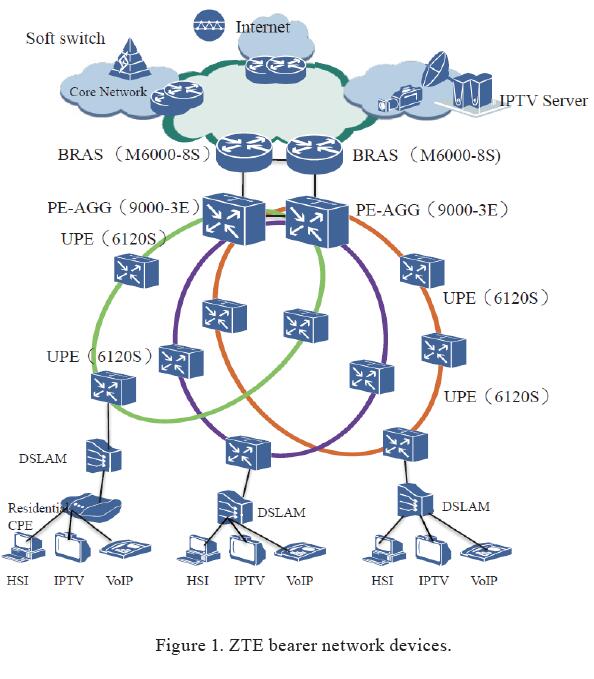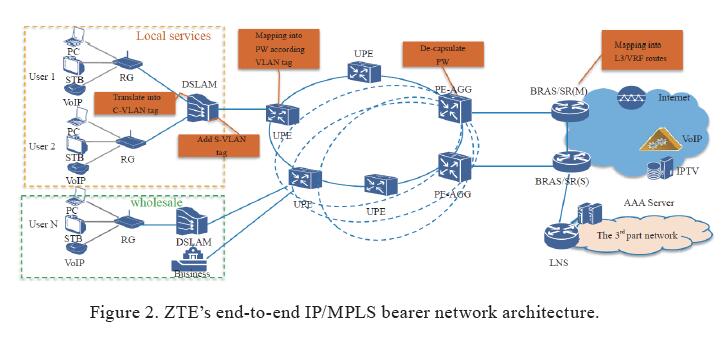NETCOM KASSEL: Deploying an End-to-end IPMPLS Bearer Network
The reason why German industry always maintains a leading place in the world is that every participant competes in a fair and challenging market. Any enterprise, large or small, keeps its vitality and competitiveness by providing differentiated and cost-effective services for customers with ever-improving technology. The telecom sector of German is an example. It not only boasts the dominant Deutsche Telekom, but also has hundreds of small and medium-sized operators like Netcom Kassel. They are competing with each other for more market share.
As a regional operator, Netcom Kassel is located in Kassel, the capital of Hessen. It used to be a municipal construction department of the Kassel government and has developed by leaps and bounds in telecom services in recent years. After it built DSLAM-based access networks, access convergence networks, and IP networks, Netcom Kassel has launched various services, including HSI, VoIP, BTV, leased line and broadcast wholesale. To date, it has expanded its services to Grebenstein, Hofgeismar, and Immerhausen, and is building a new DSLAM network in Calden.
With the continuous development and expansion of services, the existing network of Netcom Kassel, which is Ethernet, can’t meet user needs any more. It encountered insurmountable challenges in terms of IPTV multicast, QoS, protection switching, and IPv6 evolution. Therefore, Netcom Kassel failed to provide cost-effective services for customers.
After having successfully built a DSLAM network for Netcom Kassel, ZTE was thinking about how to build a bearer network to help Netcom Kassel meet new service requirements. By analyzing the technical requirements and future plans of Netcom Kassel, ZTE’s bearer experts proposed to build an end-to-end IP/MPLS bearer network. Compared with other solutions, ZTE’s end-to-end IP/MPLS solution stood out for its distinct advantages. Thus, Netcom Kassel adopted it.
However, there is a large amount of work needed to be done in the network construction, such as technical solution detailing, migration solution verification, laboratory test, and project implementation.
ZTE’s bearer network devices (6120Ss, 9000-3Es, and M6000-8Ss) constitute an end-to-end IP/MPLS bearer network, which is featured by comprehensive functions, excellent performance, and high reliability (Fig. 1). As UPE devices, the 6120Ss access DSLAM services and VIP customer private line services in four cities, and transmit them to Kassel. The 9000-3Es, which are located in Kassel and work as PE-AGG devices, aggregate services and transmit them to the BRASs. The IP/MPLS network consisting of 6120Ss and 9000-3Es is characterized by perfect end-to-end O&M, protection, QoS, and clock synchronization. As broadband remote access servers (BRASs), the M6000-8Ss are equipped with PPPoE, IPoE, and L2TP functions, and provide both hot-standby redundancy and cold-standby redundancy.

Based on an advanced hardware platform, ZTE’s end-to-end IP/MPLS solution not only satisfies the current bandwidth requirements of Netcom Kassel, but also upgrades its bandwidth by orders of magnitude (Fig.2). Due to the “end-to-end layer 3 MPLS VPN” function, this solution effectively separates different services and improves security. In addition, this solution is designed with dual stacks of IPv4 and IPv6, which ensures smooth evolution towards IPv6 services for Netcom Kassel.

After the technical solution is determined, the migration solution must be developed. Considering service deployment and network plans of Netcom Kassel, ZTE has formulated a three-step migration plan as below.
● First, move the DSLAM services in Grebenstein, Hofgeismar, and Immerhausen to ZTE’s bearer network constituted by the 6120Ss and 9000-3Es. Then, aggregate services at the 9000-3Es in Kassel, and forward them to the core switches and routers of the existing network.
● Second, access services of the newly constructed DSLAM network in Calden to ZTE’s end-to-end IP/MPLS bearer network, in other words, access service at the 6120Ss, aggregate services at the 9000-3Es, and implement PPPoE and IPoE functions of the M6000-8S BRASs.
● Third, move services of Netcom Kassel in all cities to ZTE’s end-to-end IP/MPLS bearer network constituted by the 6120Ss, 9000-3Es, and M6000-8S BRASs.
The migration solution has a minimal impact on services in the existing network, ensuring smooth upgrade and practical feasibility.
This project was the debut of ZTE’s end-to-end IP/ MPLS bearer network, and the M6000-Ss as BRASs were unveiled in Germany. ZTE’s end-to-end IP/MPLS bearer network enables Netcom Kassel to simplify network O&M, reduce OPEX, and improve the accuracy of service provisioning.